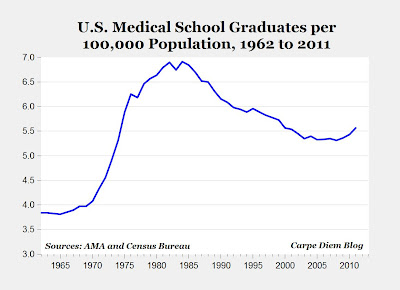The Long Con: Mail-order conservatism | Rick Perlstein | The Baffler
Ever wonder why right wing talk sponsors are so loyal?
In 2007, I signed on to the email lists of several influential magazines on the right, among them Townhall, which operates under the auspices of evangelical Stuart Epperson’s Salem Communications; Newsmax, the organ more responsible than any other for drumming up the hysteria that culminated in the impeachment of Bill Clinton; and Human Events, one of Ronald Reagan’s favorite publications. The exercise turned out to be far more revealing than I expected. Via the battery of promotional appeals that overran my email inbox, I mainlined a right-wing id that was invisible to readers who encounter conservative opinion at face value.
Subscriber lists to ideological organs are pure gold to the third-party interests who rent them as catchments for potential customers. Who better suits a marketing strategy than a group that voluntarily organizes itself according to their most passionately shared beliefs? That’s why, for instance, the other day I (and probably you) got an advertisement by way of liberal magazine The American Prospect seeking donations to Mercy Corps, a charity that helps starving children in the Third World. But back when I was getting emails every day from Newsmax and Townhall, the come-ons were a little bit different.
Dear Reader, I’m going to tell you something, but you must promise to keep it quiet. You have to understand that the “elite”would not be at all happy with me if they knew what I was about to tell you. That’s why we have to tread carefully. You see, while most people are paying attention to the stock market, the banks, brokerages and big institutions have their money somewhere else . . . [in] what I call the hidden money mountain . . . All you have to know is the insider’s code (which I’ll tell you) and you could make an extra $6,000 every single month.
Soon after reading that, I learned of the“23-Cent Heart Miracle,” the one “Washington, the medical industry, and drug companies REFUSE to tell you about.” (Why would they? They’d just be leaving money on the table: “I was scheduled for open heart surgery when I read about your product,” read one of the testimonials. “I started taking it and now six months have passed and I haven’t had open-heart surgery.”) Then came news of the oilfield in the placenta.
“Dear NewsMax Reader,” this appeal began, leaving no doubt that whatever trust that publication had built with its followers was being rented out wholesale. “Please find below a special message from our sponsor, James Davidson, Editor of Outside the Box. He has some important information to share with you.”
Here’s the information in question: “If you have shied away from profiting from the immense promise of stem cells to treat disease because of moral concern over extracting stem cells from fetal tissue, pay close attention. You can now invest with a clear conscience. An Israeli entrepreneur, Zami Aberman, has discovered‘an oilfield in the placenta.’ His little company, Pluristem Life Systems (OTCBB: PLRS) has made a discovery which is potentially more valuable than Prudhoe Bay.”
Davidson concluded by proposing the lucky investor purchase a position of 83,000 shares of PLRS for the low, low price of twelve cents each. If you act now, Davidson explained, your $10,000 outlay “could bring you a profit of more than a quarter of a million dollars.”
Not long after I let the magic of the placenta-based oilfield sink in, I got another pitch, this one courtesy of the webmasters handling the Human Events mailing list and headed “The Trouble with Get-Rich-Quick Schemes.” Perhaps I’m a little gullible myself; for a couple of seconds, I believed the esteemed Reagan-era policy handbook might be sending out a useful consumer advisory to its readers, an investigative guide to the phony get-rich-quick schemes caroming around the right-leaning opinion-sphere. But that hasty assumption proved sadly mistaken, presuming as it did that the proprietors of outfits likeHuman Events respect their readers. Instead, this was a come-on for something called“INSTANT INTERNET INCOME”—the chance at last to “put an end to your financial worries . . . permanently erase your debts . . . pay cash for the things you want . . . create a secure, enjoyable retirement for yourself . . . give your family the abundant lifestyle they so richly deserve.”


